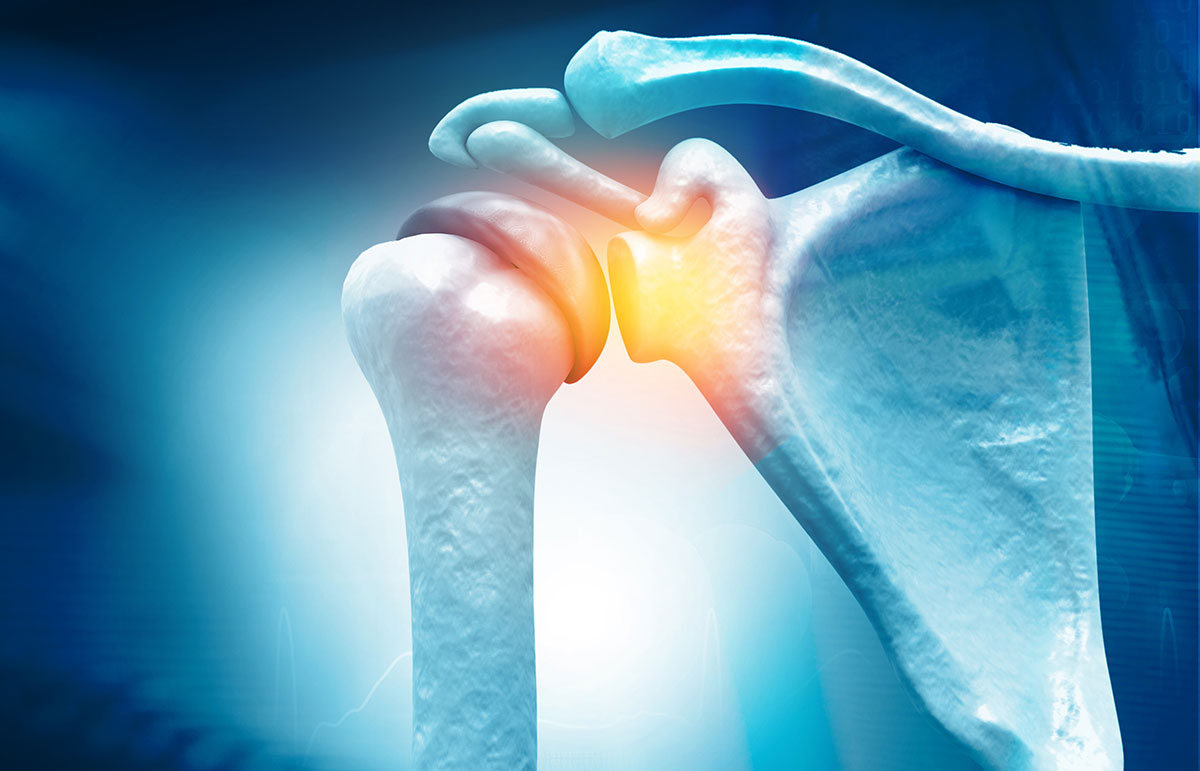Rotator Cuff Injuries, Tears, and Treatments
It’s easy to take our shoulders for granted. Shoulders are integral to many daily activities, such as getting dressed, reaching objects above your head, and engaging in any physical activities requiring significant arm movement. Each shoulder consists of the acromioclavicular joint and the glenohumeral joint. When we lose range of motion or feel pain while moving these ball-and-socket joints, we realize just how vital our shoulders are for work and recreation.

What is a rotator cuff?
At the core of a shoulder’s anatomy is the rotator cuff, which helps to protect your shoulder joints and allows you to move your arms above your head. That’s a necessary motion to use in everyday life, and it’s crucial if you’re an athlete or work in the skilled trades.
The rotator cuff is a group of muscles and tendons in each shoulder. It holds your humerus (upper arm bone) in your shoulder socket. It keeps your arm stable while allowing it to lift and rotate. Stress or trauma on the rotator cuff can cause an injury.
What are rotator cuff injuries?
A hard fall, repetitive arm motions, or problems with your shoulder structure can injure the rotator cuff. If you play sports, you may know at least one person who has injured their rotator cuff. Common symptoms of an injury include a dull ache in the shoulder, arm weakness, limited range of motion, and pain while trying to sleep.
Sometimes tendonitis (inflammation of the tendon connected to a bone) or bursitis (irritation of the bursa) can occur in the shoulder, which causes aches and pain. These conditions will often improve over time by resting, using ice and heat, taking anti-inflammation medication such as ibuprofen, and stretching.
Rotator Cuff Tears
If you place too much stress on the rotator cuff, or bend your arm in an unnatural position, then there’s a chance you’ll experience a tear. Rotator cuff tears can be painful and problematic; if you have one, it’s not something to ignore.
There are plenty of ways to tear your rotator cuff. For instance, you could experience a fall that forces you to put too much force on your shoulder. Or you could cause a tear by lifting something heavy using a sudden, jerking motion.
Not all tears happen immediately. Some of them happen gradually. For instance, your rotator cuff may have some general damage due to everyday use. Or, repetitive overuse can weaken the muscles and tendons and make a more extensive tear more likely.
There are two types of rotator cuff tear: a partial tear and a full-thickness tear. With a partial tendon tear, the tendon is still attached to the bone. A full-thickness tear is when the tendon completely detaches from the bone.
Sometimes, shoulder dislocation can lead to a rotator cuff tear. Shoulder dislocations can occur following a fall, car accident, or sports injury.
Will physical therapy help?
Physical therapy can help put the patient on the road toward recovery. Exercise can improve flexibility and strengthen the muscles surrounding the shoulder joints.
After rest, physical therapy is typically the first treatment method suggested by healthcare professionals, especially if the rotator cuff injury is only mild. Some people who experience a rotator cuff injury will find physical therapy and exercise to be the only treatment methods required to manage and improve their symptoms.
When is rotator cuff surgery recommended?
Although doctors often initially suggest rest and physical therapy, some rotator cuff injuries can be more severe than others and require more advanced treatment.
Orthopedic surgeons usually recommend rotator cuff surgery for patients with ongoing pain or weakness in their damaged rotator cuff and who are not feeling better after 6-12 months of other treatment options. Though some people with rotator cuff tears do not require surgery, others opt for the procedure, particularly if the injury interferes with their work.
The actual surgery process will depend on the extent of the damage. Depending on your needs, the surgeon will repair the tear and remove any bone spurs. After the surgery, the surgeon will provide the patient with medication, advice for at-home care, and a physical therapy plan to help expedite recovery. Overall recovery time following surgery is around four months for small tears and six months for large tears.
How to get help for a rotator cuff injury:
While it can be frustrating to suffer a rotator cuff injury, it’s also important to remember there are always things you can do to recover. Timely physical therapy or minimally invasive arthroscopic surgery are possible solutions to improve shoulder mobility and strength.
If you have a rotator cuff injury — or think you do — then please get in touch with us. Our doctors have the experience and expertise you need to put yourself on the right track toward recovery. We use the latest therapies and surgical techniques to get our patients back to their best as soon as possible. To get started, schedule an appointment today.

